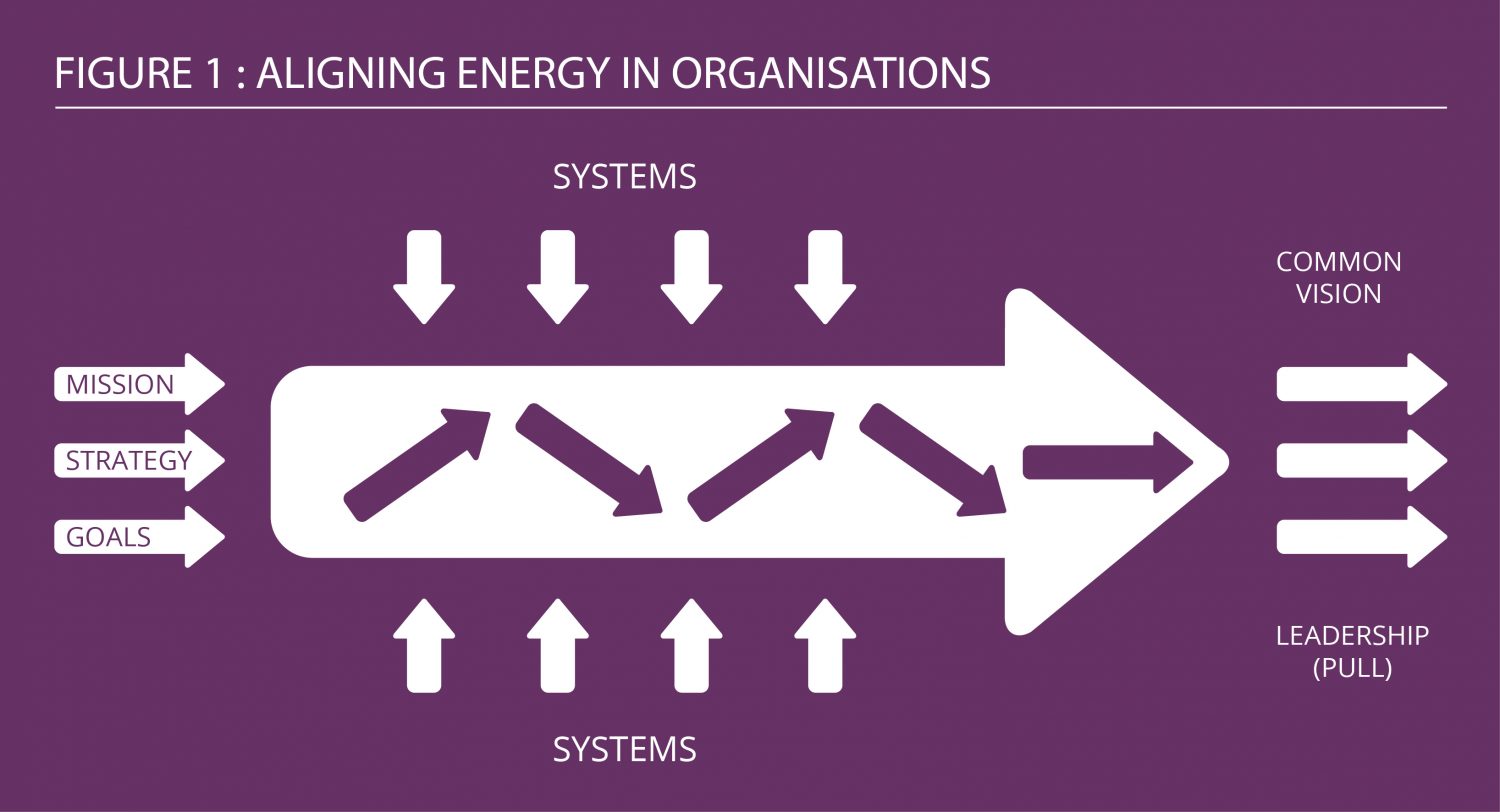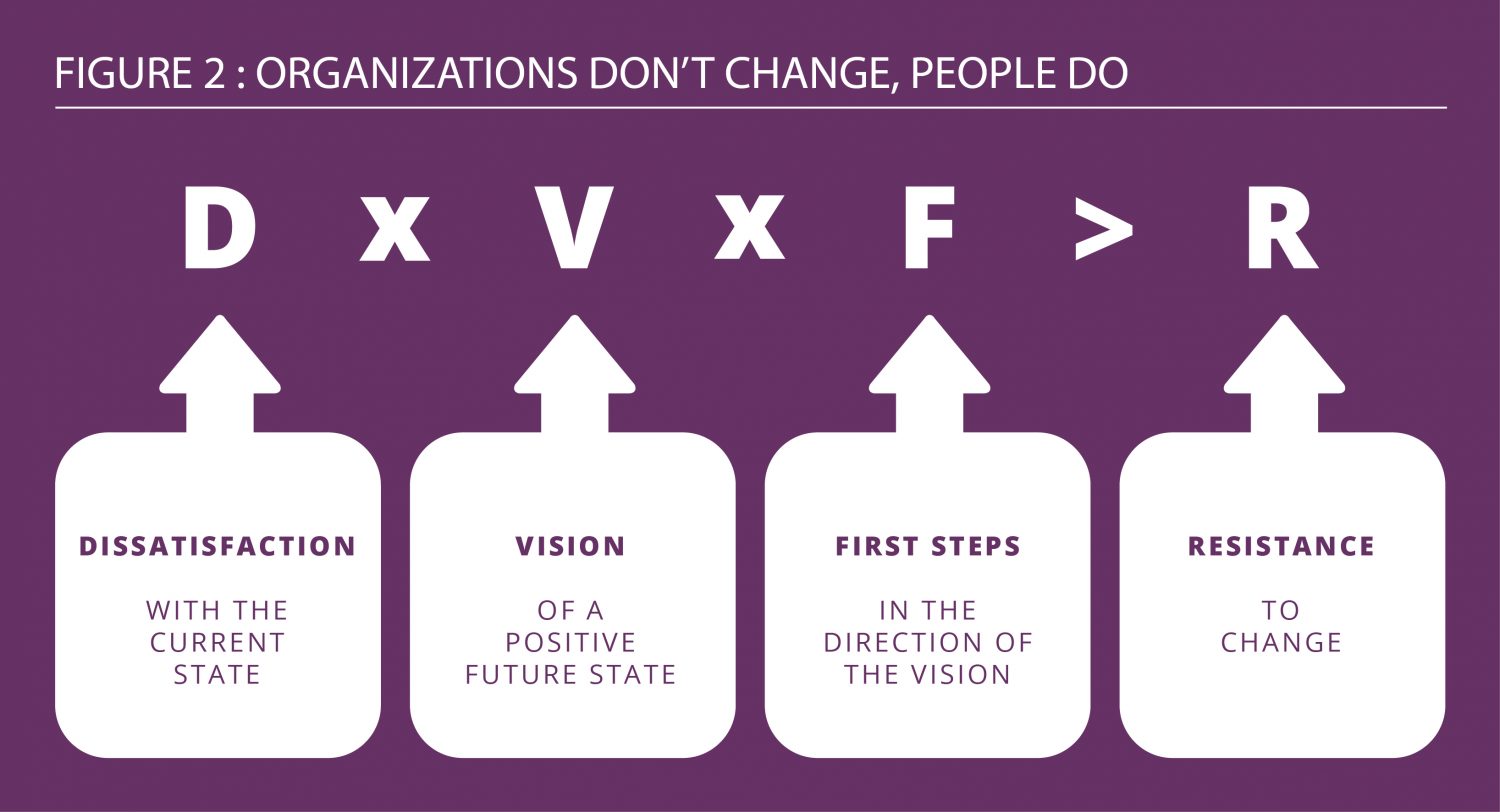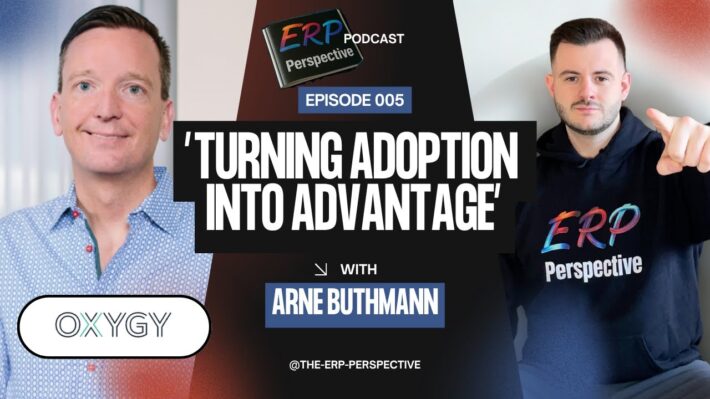- The first responsibility of leaders wanting to create a more agile culture is to create a strong sense of belonging and security.
- To build and sustain an experimentation culture, employees need positive reinforcement.
- Functions are designed to control, maintain the status quo. If you want to create an agile culture, it has to be through cross-functional teams.
- Organizations take on the personality of their leaders so they have to role-model the change in behavior they expect.
- The power of a shared vision is that it helps pull people’s efforts together in a common direction without having to dictate exactly what needs to get done.
By Steve Crom (CEO & Partner Valeocon Management Consulting) and Günter Kloucek (GM Takeda Germany)
A “future proof” company is one that is able to anticipate, adapt and capitalize on emerging opportunities. It is able to prosper in a paradoxical world. One in which there is a sense of security and belonging, while associates are encouraged to continuously challenge themselves and others to work outside of their comfort zone. There is a strong sense of shared purpose, yet an unusual degree of freedom and individual accountability in day-to-day decision making. While there is a hierarchy of responsibilities and strong functions to ensure control and compliance, nimble cross-functional teams facilitate sharing, learning, innovation and growth. Constantly changing business environments require companies to be more agile and develop the capability to continuously change to stay competitive.
What can leaders do to build an agile organization? This article explores how security and belonging, cross-functional teams, role-model leadership, a shared vision and open dialogue can come together to create an agile company culture that encourages innovation and enables organizations to change from within.
Security + Belonging = Curiosity
There is a sociological and physical reason that human beings strive for security. In the early days of our evolution, we relied on each other for our basic needs: food, shelter, warmth (Maslow, 1946). Now, our immediate needs towards the group tend to focus more on feeling secure, a chemical phenomenon which neuroscience has shed light on more recently. The hormone, oxytocin, for example, activated in the body by positive social interactions, strengthens group bonding, trust and a sense of security, which is essential in times of uncertainty and change if are to try out new things. Without the shelter of a group, very few of us would dare to take risks.
While counter-intuitive, the first responsibility of leaders wanting to create a more agile culture is to create a strong sense of belonging and security. Günter Kloucek, General Manager at Takeda Germany, introduced so-called “fireside talks” with his company, an opportunity for a small group of cross-functional employees and selected leadership members to discuss a fixed topic in “a safe area for open exchange”. According to him, “these discussions are a significant time investment by the management team, but worth it. Bringing people together is the best way to create a sense of belonging. Because people feel safe to share their thoughts and feelings, we got insights (as a management team) about employee’s perceptions of the new direction in which we wanted to take the company.” Creating space for dialogue is key for both building a common identity, airing and discussing concerns about the future.
To build and sustain an experimentation culture, employees need positive reinforcement. In addition to encouragement and recognition from leaders, employees should experience positive feedback for being curious, for trying new things. Beyond the psychological aspect, there are physiological reasons for the importance of giving positive feedback. As human beings, an intrinsic reward and motivation mechanism evolved. Dopamine, a neurotransmitter, is released in the body when we achieve a positive result, reinforcing the effort to step outside of our comfort zone in future situations. Without positive feedback, why do things differently? Why take the risk to leave the herd or challenge the status quo?
Within a company’s culture, what are the norms about taking risk? If someone fails, what are the consequences, the social costs? There is the story of a regional head at IKEA, the furniture store, who is called to the company headquarters to meet with the CEO after a disastrous financial result. The manager had made an investment of $50 million that failed. He called his wife on the way to the meeting to tell her “I expect this will be my last meeting at IKEA.” After an intense business review, the regional head still had his job. On the way out, he said to the CEO, “I thought you were going to fire me.” The CEO said, “Why would I do that when we just invested $50 million in your education?” Experiments, even the ones with “negative results” have to be viewed as positive ways to learn and grow, if a company is to be agile and innovative.
Functions Are Not Allowed To Fail – Teams Are
Corporations were first modeled after the military. Historically, they are top-down hierarchies with specialized functions meant to follow orders, procedures and policies. They functioned best in an environment that is predictable. Think of the classical functions in today’s businesses: finance, personnel departments, IT, legal. They are designed to monitor and control. “Functions are not allowed to fail” observes Massimo Appiotti, a founding Partner of Valeocon. “They are designed to control, maintain the status quo. If you want to create an agile culture, it has to be through cross-functional teams.” In the journey to transform itself from a primary care supplier to be a leader in specialty care, Günter Kloucek empowered cross-functional teams in Takeda Germany to drive this transformation and establish the required processes and capabilities for a new way of working.
Teams work in the white space between functions where the most important strategic initiatives take place. If we think of teams as the scaffolding needed to rebuild more agile organizations, we have to give them attention and power equal to, or greater, than that of functions; plus, positive recognition. The key for cross functional teams to perform successfully is for leaders to empower them behind a common purpose, create a framework in which they can innovate; and, celebrate them to stimulate the intrinsic reward and motivation mechanism we all have.
Leaders As Role Models
For better or worse, organizations take on the personality of their leaders. As part of an engagement for a leading global consumer goods company, we were asked to facilitate a project team whose mission was to identify and extract the secrets to the success of 8 affiliates around the world who had exceptional service performance. It turned out that the General Managers from Columbia to Germany to Thailand were similar in their mindsets and behaviors. They saw their role as creating an environment in which their people could contribute to their fullest potential, learn and grow. A common characteristic was their curiosity and eagerness to keep learning personally. They were eager to share the latest book they had read or experience they’d had. When asked about how they dealt with failure, they emphasized that how results are achieved (or not) is as important as the end result. If the approach was sound, but the result not as expected, then it is an opportunity to learn. They encourage people around them to take calculated risks, experiment and prototype ideas.
At the same time, agile leaders are very clear about the values, ethics and expected behavior of themselves and everyone that belongs to the organization. They reinforce positive behaviors. They give feedback on negative behaviors. They foster a working climate that is curious, collaborative yet demanding, open yet accountable.
Agile leaders appreciate diversity because it fuels creative thinking and innovation. They invite different points of view, from people with diverse backgrounds knowing that creative tension is a source of innovation.
Shared Vision Creates A Movement While Allowing Autonomy
“Joining a movement to create something new is an act of faith because it has never been done before,” observes Günter. “You rely on early adopters, their passion and commitment to turn a vision into reality.”
The power of a shared vision is that it helps pull people’s efforts together in a common direction without having to dictate exactly what needs to get done. A vision creates “pull” energy and aligns by attraction. As described by Dave Berlew, managers create alignment by two means: push and pull.
Creating pull energy from a common vision is especially effective when it is uncertain how to create the future. Take the example of President Kennedy’s challenge to put a man on the moon and get him back safely by the end of the decade. The scientists at MIT did not have to be told to scrap their work on inertial guidance systems, they knew and took the initiative to invent new guidance systems. This is an example where a compelling vision and shared purpose created a movement that motivated exceptional performance. However, this would not have been possible without giving the scientists the autonomy needed to innovate. A common vision is needed to define true north and it needs to be supported by a culture that allows people to seek out different ways of getting there.
Organizations Don’t Change, People Do
Resistance to change is natural and inevitable. Whether the change is perceived a positive or negative, it causes disruption which is uncomfortable for most of us. “You have to pick people up where they are, as individuals,” says Günter. “If the change is substantial, there will be the perception of winners and losers.” According to Beckhard and Hariss (1987), people change when they are sufficiently dissatisfied with the status quo, are drawn by a positive picture of where they are headed and clear about the first steps to get there.
Günter’s observes, “You have to ensure that enough of the key formal and informal opinion leaders in the company feel capable of going on the change journey with you.” According to Roger’s (1995) Innovation Adoption Curve, connecting with early adopters in the organization helps create the critical mass needed to reach the tipping point – it creates opportunities for people to come together, discuss and solve common problems. Nycomed did this well during the acquisition of Altana. They appointed Transition Guides from both organizations who worked together on taking the best from both worlds. Twenty middle managers representing every function were trained in change management techniques, then worked on technical issues such as how to streamline procurement processes, what the best approach to managing third-party supplier would be. Beyond the problems they solved, a new network was created that helped knit the two companies together into one. Look for opportunities to appreciate differences and create a common way forward while delivering tangible value for the business.
There are always late adopters, even saboteurs in any change initiative. If not confronted, they can contaminate others by constantly complaining and dwelling on the negative. “Peer communication is the best antidote to the nay-sayers,” observes Günter. “When it comes from their colleagues, the message that we all need to be part of the solution and have a role to play, has much more credibility.” Those perceived as “negative” often are that way for good reasons. Perhaps they have tried before and were thwarted in their efforts to make suggestions. Give them the opportunity to express their point-of-view. Acknowledge and get to the root cause of their concern, inviting them to contribute. When enough individuals in an organization change, it is reflected in the company culture.
Conclusions & Recommendations
A myth about change and culture is that if we educate people, it will change their attitude, then their behavior. Facts are usually insufficient to change behavior. As we have explored above, it is more emotional and physiological. For that reason, it is easier to act your way into a new way of thinking, than think your way into a new way of acting (Pascale, Sternin, Sternin, 2010). Social psychology and the physiology of change suggest that behaving in ways that bring better results will anchor and reinforce our attitudes and mindsets. Therefore, our recommendations for leaders looking to build an agile company culture and future proof their organization are the following:
1. Security and belonging:
Invest in activities fostering the feeling of security and belonging of employees especially in times of significant change. i.e., leaders need to be visible, accessible and create safe opportunities for employees to express their concerns, to discuss, explore and internalize what the change in the company means to them personally.
Communicate and reward examples of new behaviors and mindsets that have generated positive outcomes.
2. Cross-functional teams:
Use empowered cross-functional teams to build the foundational capabilities for how the business will work i.e., the new operating model. Create an environment that allows teams to perform successfully by providing clear mandates, governance, resources, attention and recognition from leaders.
3. Leaders as role models:
Be the change you expect in others. As the leader, your behavior, how you make decisions, your actions are closely followed and interpreted as signs of what is expected and acceptable.
Stress that how one gets results is as important as the result itself. If done in the right way with positive intent, encourage experimentation, accept mistakes as opportunities to learn.
4. Shared vision:
Involve both the formal and informal leadership of your company in creating a story about the future you want to build together i.e., a new narrative and common vision that creates pull energy.
5. Identify and connect early adopters:
Connect peers in the organization through networks such as transition guides. Confront misinterpretations of the change through peer dialogue.
Every improvement initiative is an opportunity to build an organization’s capability to manage change. That in turn, keeps an organization agile and able to prosper in a world full of uncertainty that brings with it increased risks and opportunities.
Many thanks to Sarah Crom, Nico Dorka, Massimo Appiotti, and Thomas Bertels of Valeocon as contributors.
ABOUT THE AUTHORS
Steve Crom
is the CEO and a founding Partner of Valeocon Management Consulting. He consults on strategy, change leadership, team and organizational effectiveness. He was born in the US, has lived and worked for 25 years in Europe, currently based in Germany and can be reached at steve.crom@oxygyconsulting.com
Günter Kloucek
is General Manager of Takeda Germany. He has held both operating company responsibility as well as led corporate functions including business strategy. He has more than 25 years of experience in the pharmaceutical industry.
References
Beckhard, Richard, and Reuben T. Harris. Organizational transitions: Managing complex change. Addison Wesley Publishing Company, 1977.
Maslow, Abraham H. “A theory of human motivation.” Psychological review 50, no. 4 (1943): 370.
McKee, Annie. “Happiness Trap.” Harvard Business Review, September 2017.
Pascale, Richard T., Jerry Sternin, and Monique Sternin. The power of positive deviance: How unlikely innovators solve the world’s toughest problems. Vol. 1. Harvard Business Press, 2010.
Rogers Everett, M. “Diffusion of innovations.” New York 12 (1995).
Valeocon, Common Vision Leadership, Working Paper, 2008.
[fusion_button link=”https://www.valeocon.com/wp-content/uploads/2018/09/CreatingAnAgileCompanyCulture.pdf” title=”” target=”_blank” link_attributes=”” alignment=”center” modal=”” hide_on_mobile=”small-visibility,medium-visibility,large-visibility” class=”” id=”” color=”default” button_gradient_top_color=”#3b4251″ button_gradient_bottom_color=”#3b4251″ button_gradient_top_color_hover=”#55a098″ button_gradient_bottom_color_hover=”#55a098″ accent_color=”” accent_hover_color=”” type=”flat” bevel_color=”” border_width=”0px” size=”large” stretch=”default” shape=”” icon=”” icon_position=”left” icon_divider=”no” animation_type=”” animation_direction=”left” animation_speed=”1.0″ animation_offset=””]DOWNLOAD THE PDF[/fusion_button]








